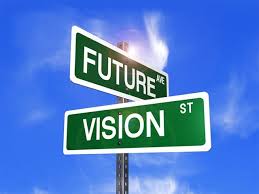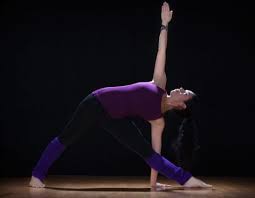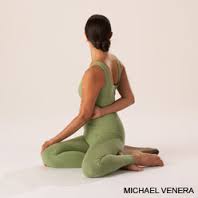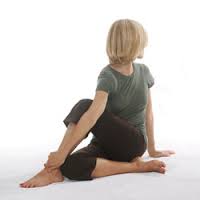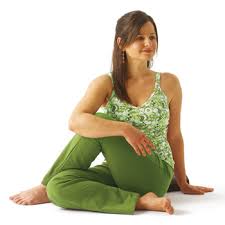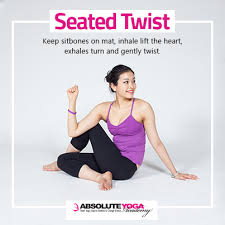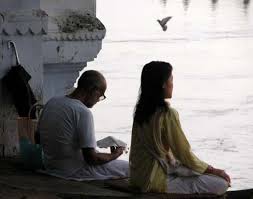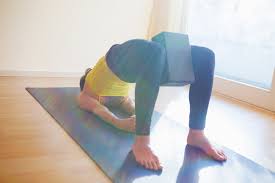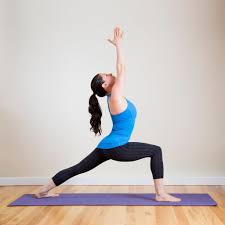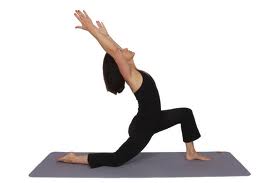Do you feel that unless you strain when you exercise, you are not doing enough?
Are you sure that strain is necessary to get strong in body or mind?
Do you think you are connected to your body because you exercise or practice yoga?
Are you sure that being physical means that you are well connected to your body?
What if strain only added body stiffness to the strength you could build without the strain?
What if being physical was not enough to be fully connected to your innate body wisdom?


On the left she tightens and creates body stiffness in her outer muscles,
on the right she allows space to relax and let her core muscles strengthen themselves!
My journey from physicality to awareness of disembodiment
When I started exercising and decided to eat right, I was motivated by wanting to look the best I could and keep my weight down. I used to exercise 3 hours a day. Half of that time was walking to and from campus for 45 minutes each way and the other 90 minutes were at the gym, running or an aerobic dance class plus using the universal machines of the time.
I thought I was very connected to my body and although I never strained to the point of hurting myself, I did judge the amount of appropriate tension by how much I was pushing myself. Burning calories was high on my list as I have a compact muscular body and always wanted to trim it down.
However, I had a profound realization that changed the course of my life. One day, while finishing grad school and being very pregnant with my first child. I found myself leaning on the table at the library so my belly was totally squished against the edge of the table. Noticing that was like a wake up call. I asked myself ” What am I doing to my baby? And what am I doing to my body?”. I started noticing other such instances. Maybe I was not as connected to my body as I thought? It made me realize that physicality was only part of being fully connected. I became aware that my physicality had been driven by my mind that acted as if it knew better than my body.
My journey towards embodiment of my aware mind
That profound realization led me to practice meditation and let go of a promising career teaching French Literature at the college level for which I had just studied several years. Everyone thought I was crazy. But academia was going to keep me in my head so I had to find another more holistic type of teaching, and I did. Although embodiment is a life long evolution, working in a mind/body field with the Alexander Technique has made a huge difference in my life, especially combined with my meditation practice.
Over time, I realized and experienced that my addictive straining was only adding body stiffness to the strength I was building. It was true in the gym or on the yoga mat. I found it to be a mindset that reveals itself throughout all aspect of my life as self-created stress if I let it. And when I am flexible and strong in my mind, I can enjoy flexible strength in my workout or my yoga practice.
It became clear that I wanted flexible strength and that flexible strength starts with an aware and embodied mind. When your mind is embodied, there is no room for strain when you are being physical because you are in harmony with your innate body wisdom. And this is a whole body affair through every movement and every moment of the day. When you focus mainly on physicality, you are missing a dimension and the door to injury is still wide open whether you are at your computer, in your kitchen or on the mat.
When your mind is embodied, there is no room for strain when being physical because you are in harmony with your innate body wisdom.
Connecting to your body in a holistic way means that you are not tending separately to the mind and the body. You are aware of both whether you meditate or exercise. It also means that you allow your whole body wisdom to guide you as it is designed rather than controlling your skeleton muscularly according to the dictates of your mind as if it knew better than your innate body intelligence. It means organic good posture takes care of itself in a sustainable way like it does in children.
There is a breakthrough process that can help you access your whole body wisdom with ease whatever type of exercise you enjoy doing. It helps you to be embodied in a way beyond focusing on your stretch edge or your pain edge which represents only a small percentage of your whole body wisdom. It helps you reclaim organic good posture and strain-free living.
Interested in exploring this further? Then check:
1) My Free Email Seminar 2) My Free Webinar 3) My Beta 90 Day E-Course Special.




